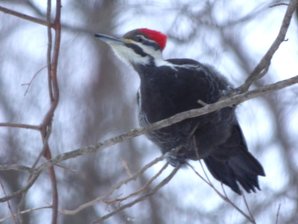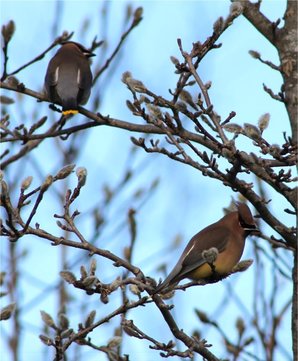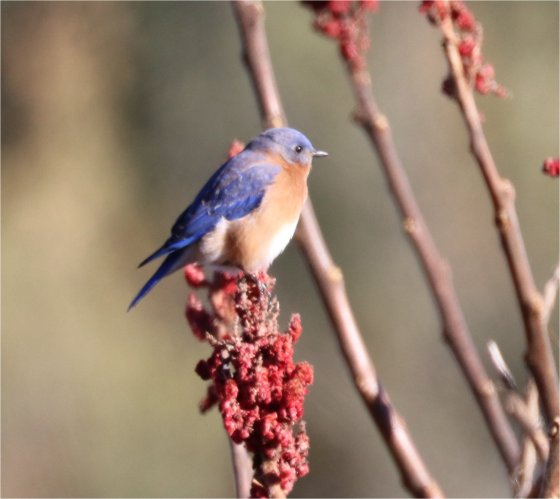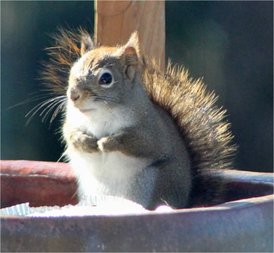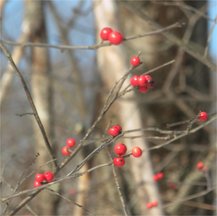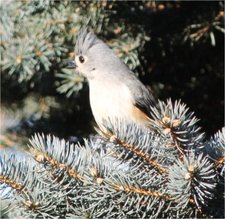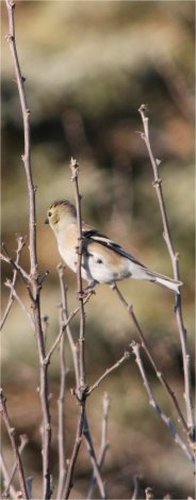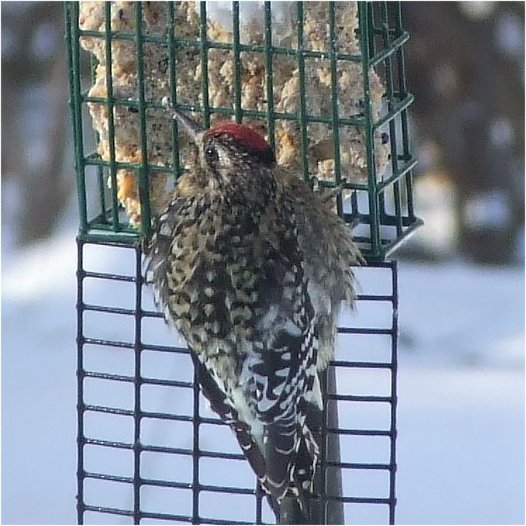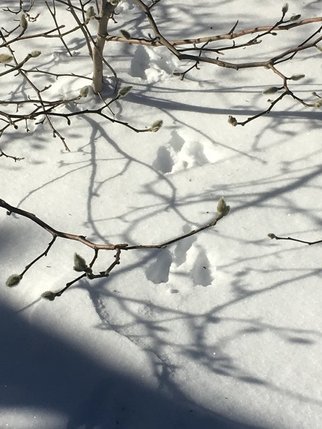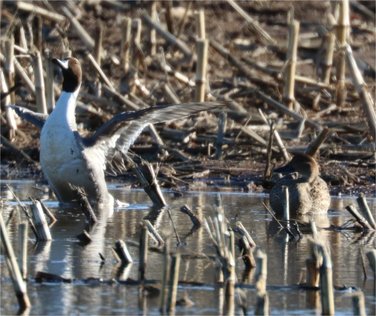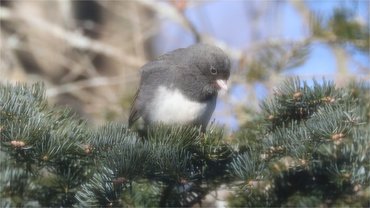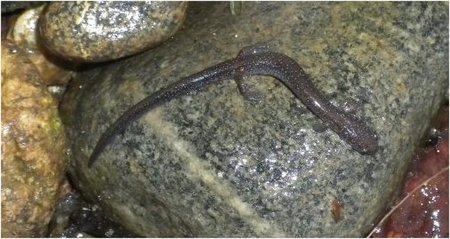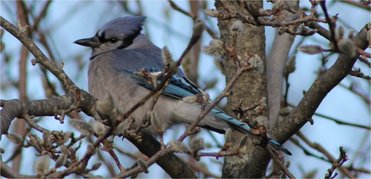Here in central Massachusetts, a mild fall was inevitably sidelined by the "real" winter that came in with the first significant snowfall on December 9th. Weeks of very slow-paced activity at birdfeeding stations gave way to a steady stream of visitors. Dark-eyed Junco numbers increased throughout December, and we were seeing them on roadsides, woods edges, and on the ground under birdfeeders. Christmas Bird Counts turned up many half-hardy species that either got caught off-guard or decided to stick it out. Temperatures plunged and fruit-eating birds descended on winterberry (IIlex verticillata), sumac, and poison ivy berries. Both Red and Gray Squirrels, in spite of winter food stashes, sought out feeders, too, joining the expected permanent resident birds and a few surprise species. Massachusetts made the national news when the very harsh "bomb cyclone" snowstorm followed by a frigid Arctic blast brought a deep freeze. Birds concentrated even more at feeders 4 January through 10 January. Heavy rains and unseasonably high temperatures up to the low 60s F. on 11-12 January created small ponds in fields and triggered some confusion in amphibians before giving way to returning "normal" winter conditions.
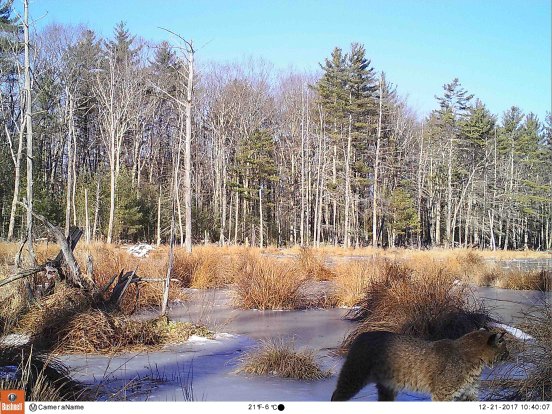
Watchful Eye
Hiker and wildlife photographer Jim Morelly sent this trail camera image of a Bobcat captured on 21 December. Jim writes: "I have been watching and exploring several central Massachusetts swamps since last winter. They certainly have shown promise [for capturing images of wildlife] . . .the variety of tracks and scat have been consistent throughout the year. The first snow on December 9th showed continued activity with predators skirting the swamp's edge."
